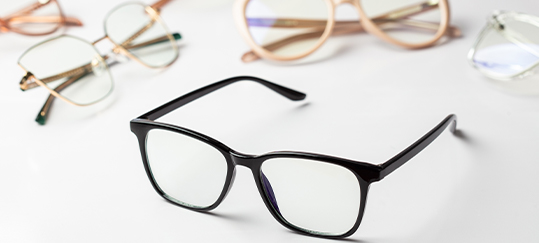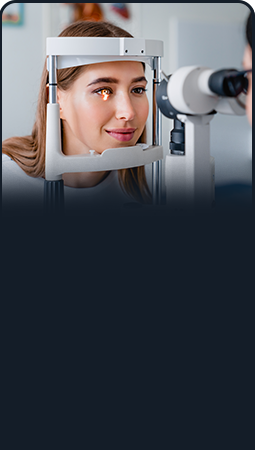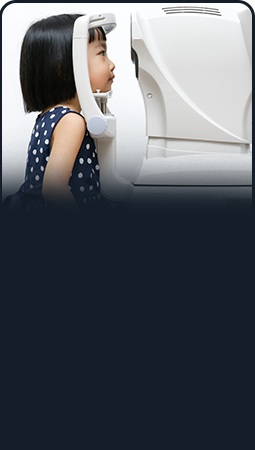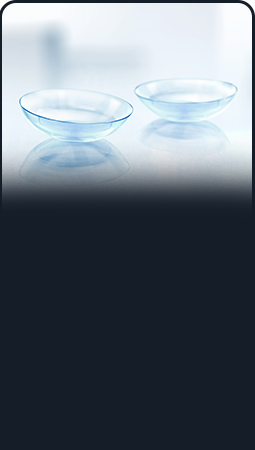Long-Term Eye Health Management
When our team discusses eye diseases with you, we consider your long-term eye health. Eye diseases can come in different forms, and your eye exam is about more than just updating your current prescription—it also allows us to assess your overall eye health.
During exams, we use a suite of diagnostic technology to get a complete picture of your eyes. We can diagnose and manage eye diseases like glaucoma, cataracts, diabetic eye diseases, and age-related macular degeneration.
We take an education-focused approach to monitoring and managing eye diseases—contact us to schedule your appointment today.
Book Appointment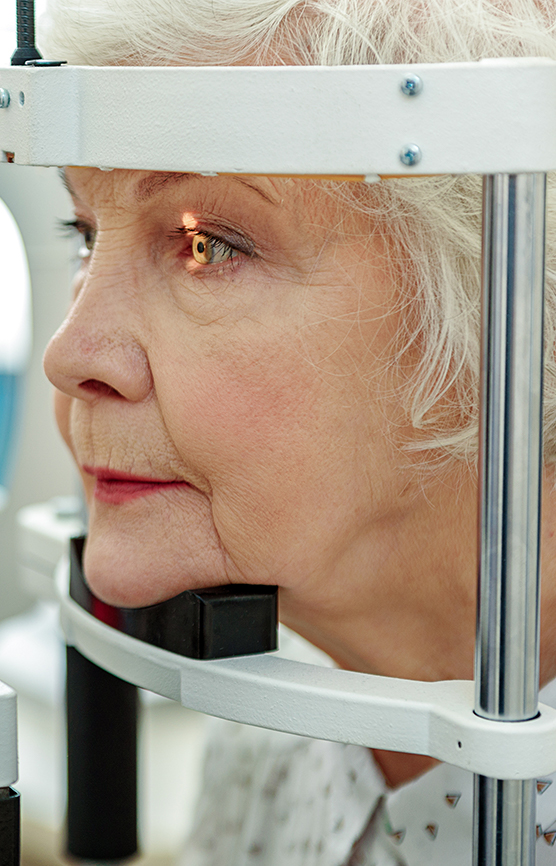
Early Detection Through Technology
Our commitment to constantly evolving is about supporting your long-term eye health. We use technology that helps us detect and manage eye conditions early because the earlier we detect eye diseases, the sooner we can prepare your personalized treatment plan.
Visual field testing and fundus photography are just 2 modern techniques we use. Our team is always looking to get a head start on finding new options for diagnosing and managing eye diseases.
Our Diagnostic Technology
When you come in for an eye exam, our team can use several different diagnostic tests to check for signs of eye diseases or other issues. These tests can create detailed images of your eyes that help us closely examine any potential problems.
Early detection is crucial when it comes to preventing potential vision loss caused by eye diseases. The diagnostic technology we use is designed to help us spot eye diseases before they affect your sight.
Visual Field Testing
We use the ZEISS Humphrey visual field analyzer for visual field testing. This tool helps us assess your peripheral vision and detect any potential blind spots or irregularities.
Visual field testing plays a crucial role in diagnosing and monitoring glaucoma and other conditions that can cause peripheral vision loss.
iCare Tonometer
The iCare tonometer is a device that measures your intraocular eye pressure. It can provide accurate and rapid testing without the need for a puff of air.
The iCare device helps our team diagnose and monitor conditions like glaucoma.
Fundus Photography
are commonly used for retinal imaging. These specialized cameras can capture high-resolution images of the retina, allowing for a thorough examination of optic tissues and blood vessels.
With the unobstructed view provided by fundus photography, we can assess your eye health accurately and identify many abnormalities or potential issues.
Corneal Topography
Corneal topography is an imaging technique that measures the surface of the eye—a lot like a 3D map. It helps find distortions in the curvature of your cornea.
Corneal topography can help us prepare you for cataract surgery and can be used to diagnose astigmatism and early cases of keratoconus.
Understanding Different Eye Diseases
Throughout all our eye care services, patient education is a significant part of what we do. That approach also applies to our eye disease management services. Eye diseases can appear in different forms—each with varying and sometimes very subtle symptoms.
Exploring and understanding the different forms of eye diseases can help you recognize some of the early signs and understand the importance of scheduling regular eye exams with Dr. Nguyen.
Glaucoma
Glaucoma is a group of eye conditions that cause damage to your optic nerve, which is responsible for sending visual information to your brain. Damage to your optic nerve can lead to vision loss and blindness if it’s not detected and treated early.
Damage from glaucoma can be caused by high pressure in the eye, referred to as intraocular pressure, but may also be caused by other factors. Age, a family history of glaucoma, and previous eye injuries can all be glaucoma risk factors.
Glaucoma can develop without easily noticeable symptoms, so getting regular eye exams is essential for catching glaucoma early.
Cataracts
Cataracts make the normally clear lens of your eye clouded. This cloudiness can vary in severity and result in different degrees of vision loss.
Symptoms of cataracts can include:
- Blurry vision
- Decreased night vision
- Muted colors
- Halos around light
If cataracts progress to an advanced stage and prevent you from going about your daily activities, such as reading or driving, we may recommend cataract surgery to remove them and help restore your vision.
Diabetic Eye Diseases
Diabetes can affect more than just your blood sugar—it can increase your risk of developing eye diseases such as cataracts and diabetic retinopathy, which is a primary vision loss concern for many people with diabetes.
Diabetic retinopathy is a condition that causes damage to the blood vessels of the retina. This damage is caused by a buildup of excess sugar in your blood and can lead to a number of issues, including vision loss.
While there aren’t always early symptoms, some signs of diabetic retinopathy can include:
- Blurry vision
- Black spots or holes in your vision
- A loss of central vision
Getting consistent eye exams can lead to the early detection of diabetes, help reduce your risk of vision loss, and even help detect conditions like heart disease and kidney failure.
Age-Related Macular Degeneration (AMD)
AMD is a leading cause of vision loss among older adults. It is a progressive eye disease that can affect your central vision by damaging your macula. Vision loss caused by AMD can make activities like reading and driving more difficult.
Dry AMD is the more common form of the disease and occurs in early, intermediate, and late stages. Wet AMD is a less common form of the disease but can cause faster and more severe vision loss.
Wet AMD is considered an eye care emergency and should be treated promptly. It occurs when abnormal blood vessels grow in the back of the eye and damage the macula.
Consistent & Comprehensive Eye Health Support
No matter what your eye care needs are, it can all start with a comprehensive eye exam. Whether you’re concerned about eye disease issues or want to learn more, Dr. Nguyen and the rest of her team have you covered.
Contact us to schedule an eye exam, learn more about your risk for specific eye diseases and conditions, and get ongoing support for your eye health.
Book AppointmentCome Visit Us
You can find us on Cedar Boulevard, with plenty of parking available in front of the clinic. We look forward to seeing you!
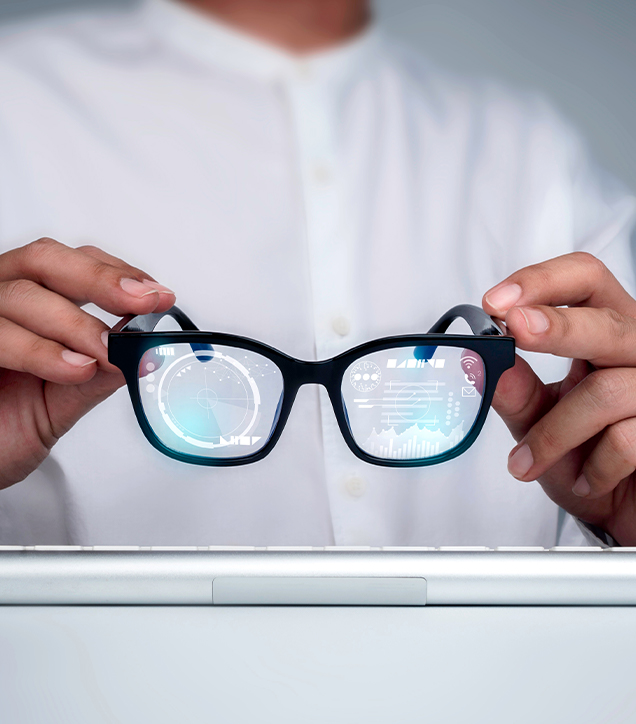
Our Address
- 39718 Cedar Blvd.
- Newark, CA 94560
Contact Information
- Phone: 510-270-8275
- Text: 510-270-8275
- Email: [email protected]
Hours of Operation
- Monday: Closed
- Tuesday: 9:30 AM – 5:00 PM
- Wednesday: Closed
- Thursday: 9:30 AM – 5:00 PM
- Friday: 9:30 AM – 5:00 PM
- Saturday: 9:30 AM – 1:00 PM
- Sunday: Closed
*We are closed from 12 – 2 PM for lunch on Tuesday, Thursday, and Friday.
Our Services
Best-Selling Brands

